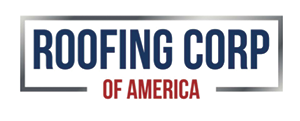Roofing Corp of America acquires Pittman Waller Roofing Company

|
Roofing Corp of America, Atlanta, has acquired NRCA member Pittman Waller Roofing Company, Macon, Ga.
Since 1926, Pittman Waller Roofing Company has served its clients’ roofing needs by offering commercial, industrial and institutional roof systems.
Pittman Waller Roofing Company will operate as a standalone entity within Roofing Corp of America and will continue to be led by John Pearson and Chuck Pollock, who have owned and led the business since 2004.
“We are excited to welcome the Pittman Waller Roofing Company to the RCA family, bolstering our already strong presence in the southeastern U.S.,” says Randy Korach, CEO of Roofing Corp of America. “We are grateful for the confidence placed in us by Chuck Pollock and John Pearson, two highly regarded, experienced and accomplished business leaders. Their voices will be a welcome addition to our leadership room.”
“We did our research and believe Roofing Corp of America is the right partner for Pittman Waller as we near our centennial anniversary serving building owners, property managers and general contractors in Macon and the surrounding areas,” Pollock says.
OSHA renews 25 OSHA Training Institute Education Centers

|
The Occupational Safety and Health Administration announced the addition of a new organization to its OSHA Training Institute Education Center network and the renewal of 25 existing education centers, according to osha.gov. The centers are nonprofit organizations offering training courses for U.S. workers and employers regarding OSHA standards and occupational safety and health topics.
Since 1992, the OSHA Training Institute Education Center program has provided training nationwide to private sector and federal personnel from agencies outside OSHA and trained more than 42,000 people during fiscal year 2022.
The centers also help administer OSHA’s Outreach Training Program and fulfill the program’s monitoring requirements. They are the sole distribution channel for Outreach Training Program trainer courses, including OSHA standards and update courses. More than 3 million people were trained in the voluntary program from fiscal year 2020 through fiscal year 2022. The program is not a training requirement for any OSHA standard.
The new and renewed centers were announced following a national competition that evaluated applicants based on organizational commitment, experience and qualifications; staff experience and qualifications; location and training facilities; marketing and administrative capabilities; diversity, equity, inclusion and accessibility; and language accessibility.
OSHA does not fund OSHA Training Institute Education Centers. The centers are supported through established tuition and fee structures and provide instructors and facilities. A list of OSHA Training Institute Education Centers is available at osha.gov/otiec.
NRCA partner CPWR—The Center for Construction Research and Training, in partnership with West Virginia University, has once again been awarded a nonfinancial cooperative agreement to continue to offer OSHA Training Institute Education Center courses under CPWR’s National Resource Center.
Diane Hendricks tops Forbes list of richest self-made women
Diane Hendricks, co-founder and chairman of NRCA One Voice member ABC Supply Co. Inc., Beloit, Wis., has topped the list of America’s Richest Self-made Women in Forbes magazine for a fifth consecutive year.
Worth $12.2 billion, Hendricks chairs one of the largest wholesale distributors of roofing, siding and windows in the U.S. ABC Supply has nearly 800 branch locations and nearly $15 billion in sales.
According to Forbes magazine, Hendricks started the company in 1982 with her late husband, Ken, and has led the company since Ken’s death in 2007. Under her leadership, ABC Supply made the two biggest acquisitions in its history—buying rival Bradco in 2010 and building materials distributor L&W Supply in 2016.
Hendricks has spent millions on local development, rebuilding entire blocks in Beloit and bringing several new businesses into Wisconsin.
SOPREMA® acquires sustainable development company Furbish
NRCA One Voice member SOPREMA Inc., Wadsworth, Ohio, has acquired Furbish, Baltimore, a sustainable development company focused on the deployment and maintenance of vegetative roof systems and other green technologies for high-performance buildings.
The acquisition expands SOPREMA’s presence in the sustainable solutions market and accelerates the growth of its SOPRANATURE® portfolio of green roof solutions. It also will lead to new opportunities for product development and professional growth opportunities for employees. Furbish now will have the SOPREMA Group’s resources to support its customers.
“Sustainability is at the forefront of SOPREMA’s global activities, and the synergy between our two companies is obvious,” says Tim Kersey, CEO—U.S. Operations for SOPREMA.
“Furbish’s green products and service offerings combined with their team’s culture and passion for sustaining the built environment make them a great fit for our company.”
Job-site fall injuries can lead to balance disorders
 The vestibular system The vestibular system
|
Nonfatal workplace injuries resulting from falls occur at a higher rate in the construction industry compared with private industry, according to constructionexec.com.
But after musculoskeletal injuries heal, there could be underlying neurological impairments, including dizziness or a persistent imbalance that occurs while walking, bending or performing other normal physical activities. These symptoms can place a worker at higher risk of falling again on the job.
The vestibular system includes parts of the inner ear and brain that help control balance and eye movements and provides the brain with information about head position, motion and body posture in relation to the surrounding environment. Some common causes of vestibular dysfunction include traumatic head/brain injury, aging, genetic conditions, viral infections and medicines.
When the vestibular system is damaged, blurry vision, hearing loss, dizziness and imbalance may occur. Environmental factors such as noise exposure and weather (for example, extreme heat) can worsen or trigger symptoms of a vestibular disorder, increasing injury risks on a job site to dangerous levels.
If a worker is diagnosed with a vestibular disorder, a clinician can develop a treatment plan to improve or eliminate symptoms and help restore stability, significantly reducing an individual’s risk of suffering a fall or related injury. Vestibular therapy may include strengthening and flexibility exercises and active head and body movements that focus on motor skills in response to changes in body/head position, as well as visual-dependency exercises to help stabilize vision through repeated exposure to specific movements or visual stimuli that trigger dizziness.
Construction employees often perform physically demanding, repetitive tasks, and vestibular therapy can be an invaluable resource. Vestibular and balance exercises can be integrated into a company’s workplace safety program to help employees avoid injury or reinjury.
Construction workers can be exposed to environmental conditions that place them at higher risk of fall-related injuries, and construction companies should consider implementing strategies that promote prevention and recovery of vestibular dysfunction.
Changing the conversation regarding careers in construction
One reason for the construction industry’s ongoing labor shortage is the stigma of construction being a dirty, undesirable job with no career advancement opportunities, according to forconstructionpros.com. But there are ways to change the conversation and share the true benefits of working in the industry.
Following are some tips for taking the sometimes-negative conversation surrounding construction as a career and changing it into a positive one.
- Construction workers are vital, and many U.S. workers have skills that are better suited for hands-on work and building. Highlight the physical satisfaction of these opportunities. Instead of saying it is a difficult, dirty job, focus on it being a rewarding job that offers physical activity outdoors, as well as the intellectual stimulation of analyzing job sites and problem solving.
- Although most inexperienced new employees can be trained to become excellent operators, the emphasis during the interview and onboarding process should be on the career opportunity and workplace environment. Rather than saying anyone can be an operator, emphasize the opportunity to learn about and operate complex equipment and how technology has made machines comfortable, efficient and safer.
- Although earning a living wage is important, most people highly value upward mobility and believing they are valued at a company. Focus on how training for a construction career is an excellent alternative to a traditional four-year college or university—without the student loan debt—and highlight opportunities to work with high-level technology. Ensure they understand the robust career opportunities available.
- Some may believe there are no opportunities in construction for people who do not want to work on job sites. Be sure people know there are opportunities in estimating, accounting and other office-based positions.
- Attracting more diverse talent as quickly as possible is crucial. A March 2022 McKinsey report showed 88% of the construction sector’s workforce currently is white and 89% is male. McKinsey said employers should consider working with nontraditional sources of talent, such as veteran-transition programs, formerly incarcerated individuals and immigrants. Rather than telling someone he or she may feel left out in the industry, focus on the action being taken to offer pathways into the construction industry for women, people of color and immigrants. It is important to ensure recruitment communications, interview and hiring techniques, and onboarding processes are fully articulated and as inclusive as possible.
How can the construction industry cope with rising inflation?
Inflation has reached levels not seen since the 1980s, and the construction industry has been hit hard, according to constructionexec.com. In addition to inflation issues, construction leaders are combating supply chain challenges and labor shortages.
Vistage’s recent research shows 96% of construction CEOs are experiencing increased vendor prices because of inflation. Eighty-seven percent report higher costs for raw materials and other inputs, and 84% anticipate their prices will rise during the next year.
Consider the following ways to manage during inflation:
- Think big picture. Efficiency is crucial. Construction leaders can invest in their businesses with technology and software that increases productivity and reduces project time. It may cost more upfront but can benefit the company, employees and customers.
- Hiring starts with retention. Although hiring and recruitment strategies are vital during labor shortages, leaders should dedicate equal time and money to employee retention. Leaders who adjust internal salary bands, offer programs for leadership development and invest in upskilling/reskilling can see a more engaged workforce. Employees who feel valued by their organization likely will stick around longer.
- Seek low-hanging fruit. Look for cost-savings opportunities wherever possible. You can review contracts with top vendors and identify opportunities to price freeze or renegotiate. Talk with employees to see whether they can identify small costs that add up over time for items that no longer are useful.
Despite industry challenges, Vistage research shows 41% of construction CEOs expect to increase revenue during the year ahead. And a 2022 Deloitte survey of U.S. executives and other senior leaders in construction found 91% of respondents characterized the business outlook for their industry as somewhat or very positive, which is 23% higher than the outlook for 2021.
Managing thoughtfully through ongoing inflation, labor shortages and supply chain issues can help your company overcome future challenges.



